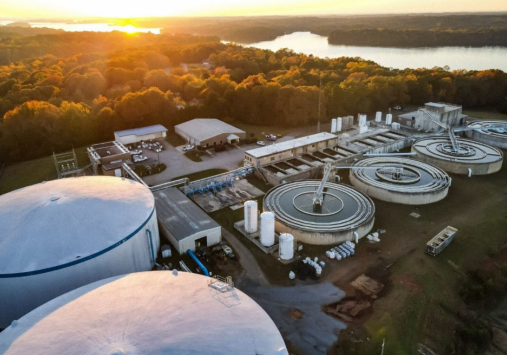
Transforming Water Treatment: The Advanced Oxidation Process Upgrade at ARJWS
Water treatment is an essential yet challenging task, especially when it comes to removing persistent taste and odor compounds. The Anderson Regional Joint Water System (ARJWS), which supplies water to the northwest corner of South Carolina, has faced this exact issue for years. Despite meeting EPA regulations, the conventional treatment methods employed by ARJWS were not sufficient to eliminate unwanted taste and odor caused by geosmin and 2-Methylisoborneol (MIB) compounds. To address this, ARJWS embarked on an innovative upgrade project, incorporating an Advanced Oxidation Process (AOP) with side stream gas injection. The result? A groundbreaking improvement in water quality, operational efficiency, and cost savings.
Innovative Solutions for Persistent Problems
The ARJWS water treatment plant, sourcing water from the Lake Hartwell Reservoir, has traditionally utilized flocculation, sedimentation basins, and multimedia filtration. While effective for many contaminants, these methods fell short in removing the compounds responsible for taste and odor issues. Under pressure to enhance safety and efficiency, ARJWS partnered with Xylem and Statiflo Corporation to pilot a more advanced treatment solution.
The Advanced Oxidation Process (AOP)
The chosen solution was an Advanced Oxidation Process using ozone and hydrogen peroxide treatments. This method is particularly effective in breaking down complex organic compounds. The system design included two Xylem 1,000 ppd ozone generators, which use a Statiflo Gas Dispersion System (GDS) to efficiently dissolve ozone throughout the water flow. This even distribution is crucial for the effectiveness of the treatment, ensuring that the maximum amount of contaminants are neutralized.
Engineering Excellence
A key aspect of the success was the highly efficient Statiflo Gas Dispersion System (GDS). This system incorporates state-of-the-art static mixers designed for optimal gas dispersion and mixing, achieving exceptional Mass Transfer Efficiency (MTE) of 98.5%. The design considerations were extensive, incorporating Computational Fluid Dynamics (CFD) analysis to ensure that the system would perform as required under various operational conditions.
Significant Cost Savings
One of the most impressive outcomes of the AOP upgrade at ARJWS is the projected cost savings. By maintaining a minimal headloss of less than 0.2 psi and optimizing energy consumption, the upgrade is expected to save over $1,000,000 in operational costs over a 20-year period. This is achieved through the efficient use of resources and the reduction in maintenance needs, thanks to the robust design of the GDS.
Sustainable and Reliable Operations
The retrofit of the GDS into the existing contact basin proved to be a transformative upgrade. It not only improved water quality but also ensured that the facility could operate sustainably over a wide range of flow conditions. The system’s low energy consumption and minimal maintenance requirements further contribute to its long-term reliability and cost-effectiveness.
Collaborative Efforts and Future Implications
The success of this project highlights the importance of collaboration between various stakeholders, including ARJWS, Statiflo Corporation, Xylem, and engineering consultants. By working together, they were able to design and implement a modern, efficient, and reliable solution to a longstanding problem.
The Advanced Oxidation Process upgrade at ARJWS is a prime example of how innovative engineering and strategic collaboration can address complex water treatment challenges. By integrating cutting-edge technology and optimizing system design, ARJWS has set a new standard in water treatment, providing a model for other facilities to follow. This upgrade not only ensures safer, better-tasting water for the community but also delivers substantial cost savings and operational efficiencies for years to come.
This case study serves as a valuable reference for other water treatment facilities facing similar challenges. It demonstrates that with the right technology and collaborative approach, it is possible to significantly enhance water treatment processes, ensuring high-quality water supply while also achieving economic and operational benefits.

